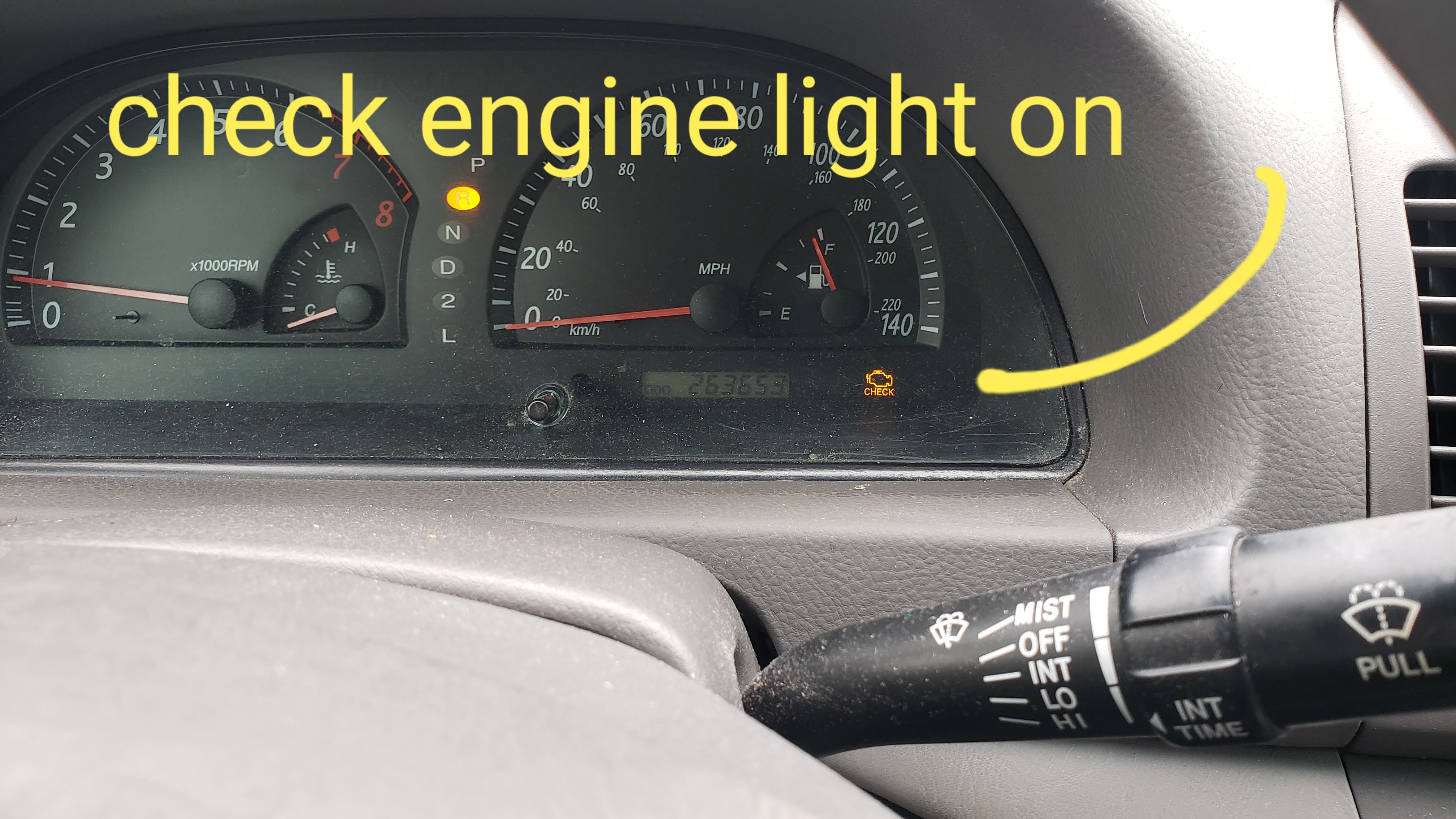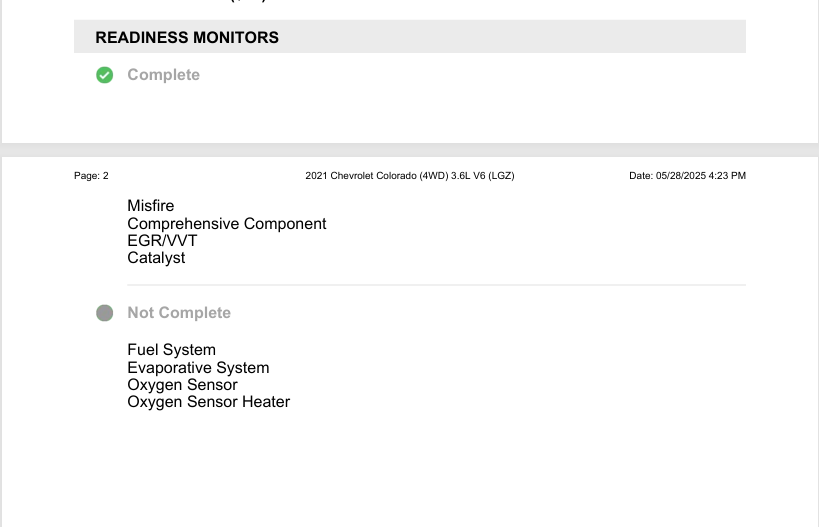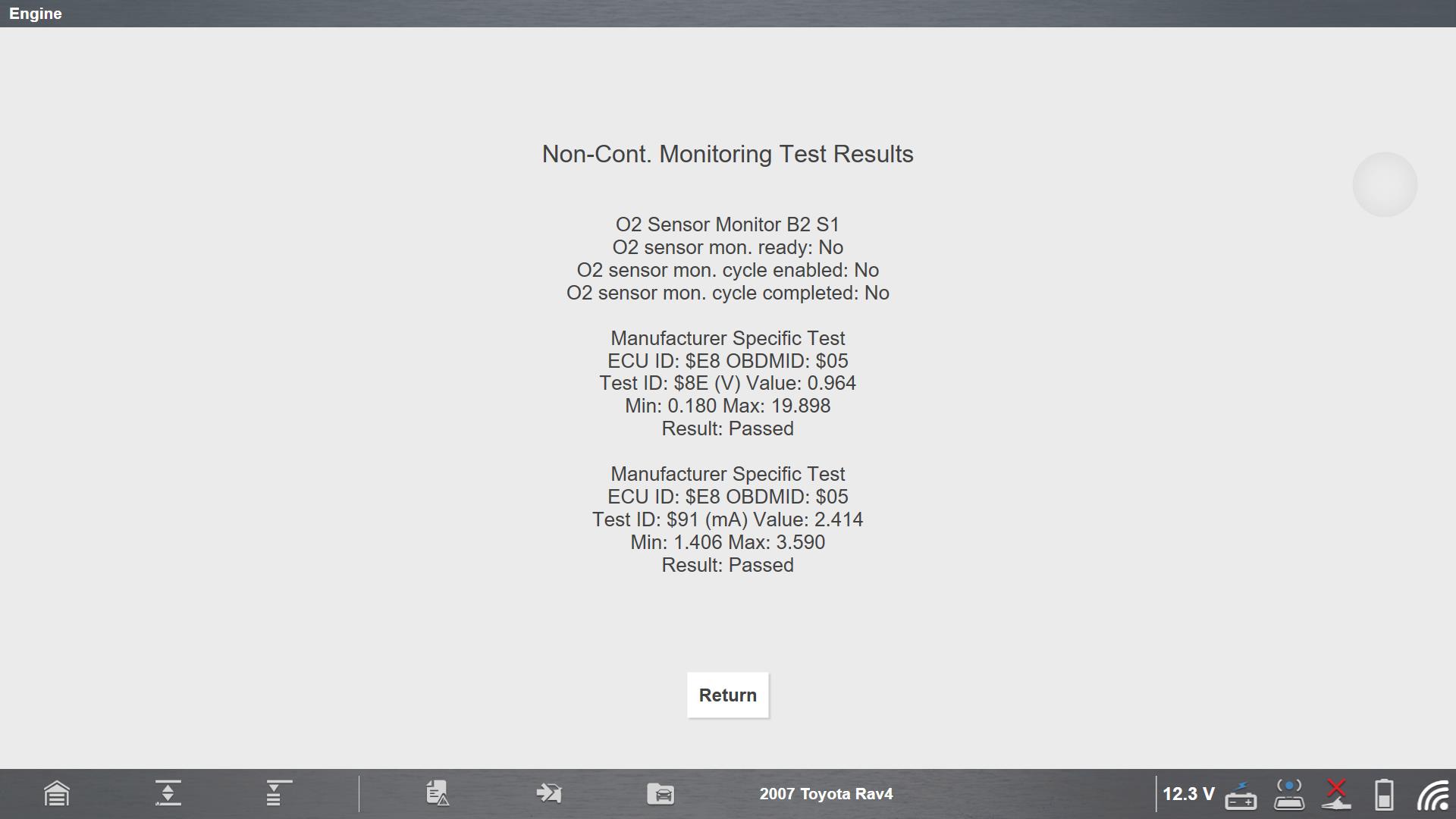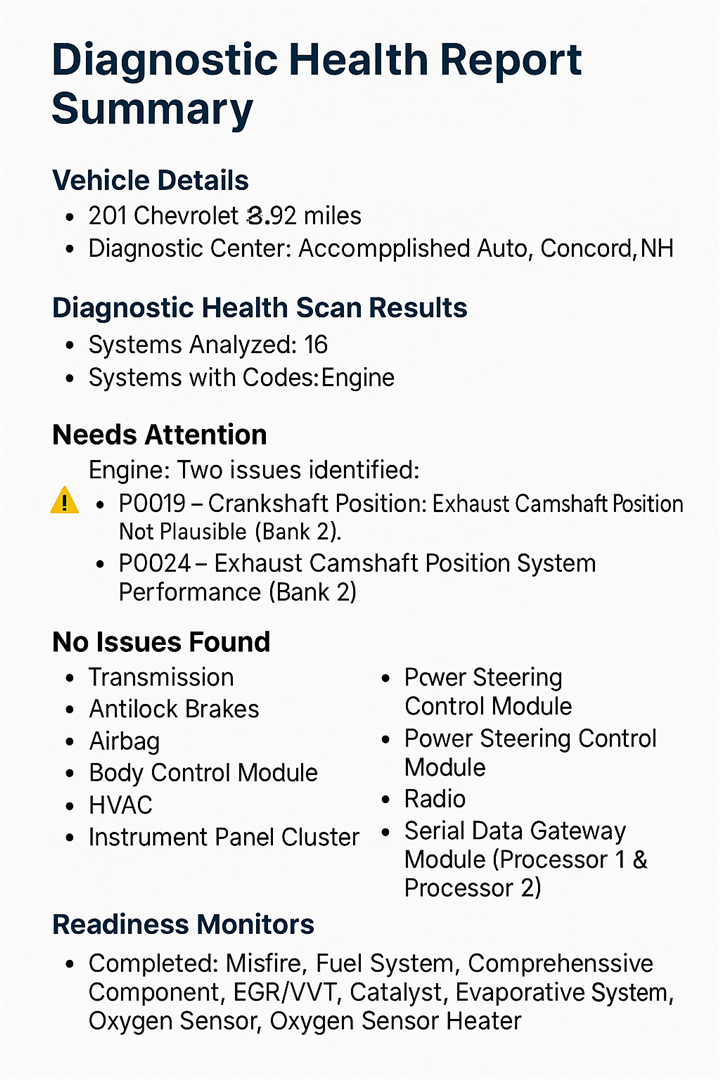 A Comprehensive Guide to NH State Inspections: Understanding OBD2 Requirements
A Comprehensive Guide to NH State Inspections: Understanding OBD2 Requirements
Ensuring Compliance with Emissions Standards in New Hampshire
Introduction
New Hampshire's state vehicle inspections are an essential aspect of ensuring road safety and minimizing environmental impact. Among the inspection requirements, the OBD2 (On-Board Diagnostics II) standards play a pivotal role in determining a vehicle's emissions compliance. This blog post delves into the specifics of OBD2 requirements, especially focusing on how they apply to vehicles of varying ages and the nuances of readiness monitors.
Inspection Requirements for Vehicles Over 20 Years Old
In New Hampshire, vehicles over 20 years old are subject to relaxed inspection requirements compared to their newer counterparts. These vehicles undergo a visual inspection to confirm the presence of all emissions equipment originally installed by the manufacturer. This includes components such as catalytic converters and smog pumps. While these parts must be intact and in their proper places, the vehicle does not need to pass full emissions testing. This approach acknowledges the limitations of older vehicles while ensuring they meet basic environmental standards.
 OBD2 Readiness Monitors: What Are They?
OBD2 Readiness Monitors: What Are They?
The On-Board Diagnostics system runs various self-tests called readiness monitors to assess a vehicle's emissions performance. Readiness monitors fall into three primary categories:
1. Continuously Running Monitors
These tests activate immediately when the vehicle's key is turned on, initiating diagnostic checks as the engine starts. These monitors continuously assess critical systems, such as the fuel system and comprehensive components like oxygen sensors. If an issue arises during these tests, it results in a failed test outcome within the system.

2. Conditional Emissions Tests
These monitors require specific driving conditions to operate. Unlike continuously running monitors, these tests await particular circumstances, such as speed thresholds, ambient temperatures, or engine dynamics, before they are conducted. Once the conditions align, the vehicle runs the tests and records either a pass or fail outcome.
3. Manufacturer-Specific Monitors
Certain monitors are unique to a manufacturer and are often linked to reliability or vehicle efficiency rather than emissions regulations. While these may not directly affect inspection compliance, manufacturers design them to enhance the vehicle's overall performance. Depending on the monitor, the tests may or may not trigger a warning light.
Inspection Requirements for Vehicles Newer Than 20 Years
For vehicles newer than 20 years old, OBD2 standards are more stringent. Here are the key stipulations:
- For all vehicles, only one readiness monitor is allowed to fail during testing.
These requirements ensure newer vehicles maintain stricter emissions compliance due to their advanced technology and diagnostic capabilities.
How Readiness Monitors Affect Inspections
Understanding readiness monitors is essential for explaining their role in inspections. These self-tests are designed to identify and monitor trends rather than react to isolated incidents. Here’s how this impacts compliance:
Warning Light Behavior
When a failed test occurs in the OBD2 system, the vehicle’s warning light may or may not turn on. This is because the system often seeks patterns before concluding that a fault exists. If the next test passes, the warning light remains off, and the vehicle is considered compliant as long as enough monitors have previously passed the test.

Fault Trends and Consecutive Failures
If the system detects consecutive failed tests, the warning light will illuminate. Once the light is on, the vehicle cannot pass the emissions inspection until the underlying issue is diagnosed and resolved. This is critical in ensuring vehicles with persistent emissions problems are flagged and corrected.
Causes of Readiness Monitor Resets with No Fault
Readiness monitors can reset even when no apparent fault is present, creating confusion during emissions inspections. Here are common causes of failed emissions associated with incomplete readiness monitors:
- Recent Repairs: After a repair, a vehicle’s OBD2 system may reset, erasing previously completed readiness tests. If the vehicle has not been driven under the necessary conditions or for a sufficient amount of time to allow the monitors to retest, they will remain incomplete, leading to a failed inspection.
- Weak or Dead Battery: A drop in voltage caused by a weak or dead battery can result in a system reset. Because readiness test data is not retained when the battery voltage is too low, the monitors revert to an incomplete status, requiring the vehicle to go through a drive cycle again to complete testing.
- Unfavorable Driving Conditions: Readiness monitors require specific conditions, such as certain speeds, stop-and-go patterns, or engine temperatures, to perform their tests. If these conditions aren’t met consistently, the monitors remain incomplete.
- Faulty Components or Wiring: Although rare, wiring issues, or malfunctioning components can interfere with a readiness monitor’s ability to complete or store test results. This may also point to a deeper underlying issue requiring diagnosis.
Understanding these factors is critical for both technicians and vehicle owners when addressing incomplete readiness monitors. Ensuring that a vehicle has had adequate time and proper conditions for testing can prevent unnecessary failures during inspections.
Diagnostic and Testing Process
When a vehicle does not pass due to failed readiness monitors, further testing is required. Technicians will evaluate the OBD2 system to determine the source of the fault. Common causes include malfunctioning sensors, leaks, or other emissions-related issues. Once the problem is addressed, the readiness monitors must be re-run to confirm the issue is resolved and the system is compliant.
Conclusion
New Hampshire’s OBD2 inspection requirements balance environmental responsibility with practicality. While older vehicles enjoy leniency through visual inspections, newer vehicles adhere to stricter standards to maintain emissions compliance. Understanding readiness monitors, their categories, and their behavior is essential for vehicle owners to navigate the inspection process successfully. By ensuring compliance, drivers contribute to cleaner air and a healthier environment across the Granite State.
Whether your vehicle is over 20 years old or a newer model, keeping your emissions system in check is more than just an inspection requirement—it’s a commitment to sustainable driving on New Hampshire’s roads.